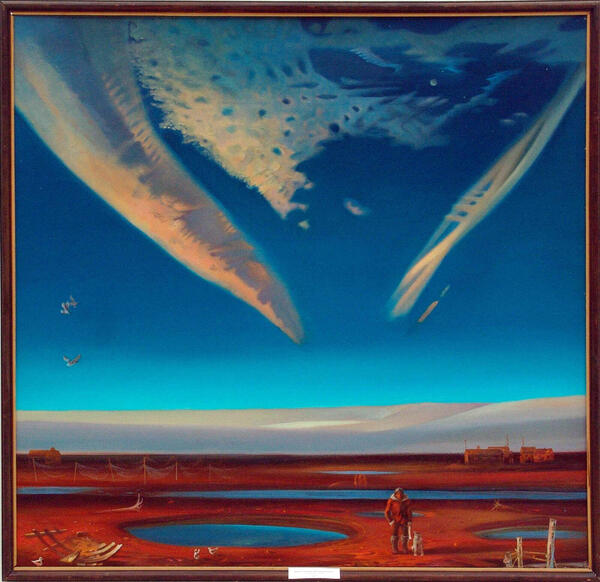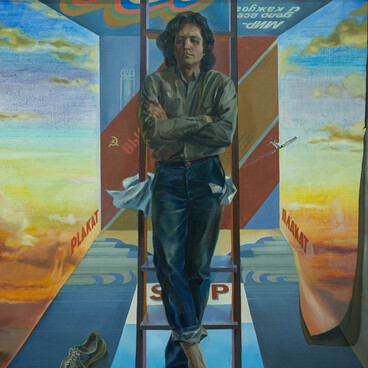Valery Arkadyevich Ivanov (Severyanin) is a painter and an Honored Artist of the Chuvash Republic. He was born in 1951 in Cheboksary. The artists graduated from the Art and Graphics department of the Chuvash State Pedagogical University named after Ivan Yakovlev. His works were created as a result of creative trips to the Polar Urals, the Taymyr Peninsula, Kizhi, the Yamal Peninsula, Valaam Island, Lake Baikal, Kamchatka, and the Caucasus, and brought him nation-wide recognition. Valery Ivanov is the author of the books “My North (The Artist’s Travel Notes)”, “Across Russia”, “Way to the Top”, and “A Thorny Path: the 35th Anniversary of Art Career”.
His understanding of the nature and lifestyle of the peoples inhabiting the North, the way he sheds light on the scale of the problems of his time, and his manner of painting put Valery Ivanov on a par with Rockwell Kent and Vladimir Meshkov. However, the artist created his own path and added his unique voice to the common northern song. He directs his attention to eternal life, infinite worlds, primeval nature, untouched beauty of the “edge of the earth”, and evolving humankind that brings both progress and destruction into the world.
The artist saw the place, depicted in the painting “Blue Lakes of Siberia”, not far from Surgut, near the Ob River, where the water subsides after the spring flood, leaving behind lands covered with reddish silt and small lakes reflecting the poignant azure sky. He was struck by the beauty of the sunset and the unusual shape that the vertical streaks in the sky had taken (which might have been lenticular clouds or airplane trails illuminated by the warm evening light).
The painting was exhibited at one of the first all-Russian exhibitions “School — Teacher — Art” in 1986 and enjoyed critical acclaim. The artist’s later works are filled with anxiety for the future of humankind and seem to express sorrow at the deeds of his contemporaries. At the same time, the works of Valery Ivanov do not cause a feeling of hopelessness — instead, they encourage a positive attitude and hope for the time when people and the Earth will be united in their aspirations.
His understanding of the nature and lifestyle of the peoples inhabiting the North, the way he sheds light on the scale of the problems of his time, and his manner of painting put Valery Ivanov on a par with Rockwell Kent and Vladimir Meshkov. However, the artist created his own path and added his unique voice to the common northern song. He directs his attention to eternal life, infinite worlds, primeval nature, untouched beauty of the “edge of the earth”, and evolving humankind that brings both progress and destruction into the world.
The artist saw the place, depicted in the painting “Blue Lakes of Siberia”, not far from Surgut, near the Ob River, where the water subsides after the spring flood, leaving behind lands covered with reddish silt and small lakes reflecting the poignant azure sky. He was struck by the beauty of the sunset and the unusual shape that the vertical streaks in the sky had taken (which might have been lenticular clouds or airplane trails illuminated by the warm evening light).
The painting was exhibited at one of the first all-Russian exhibitions “School — Teacher — Art” in 1986 and enjoyed critical acclaim. The artist’s later works are filled with anxiety for the future of humankind and seem to express sorrow at the deeds of his contemporaries. At the same time, the works of Valery Ivanov do not cause a feeling of hopelessness — instead, they encourage a positive attitude and hope for the time when people and the Earth will be united in their aspirations.



